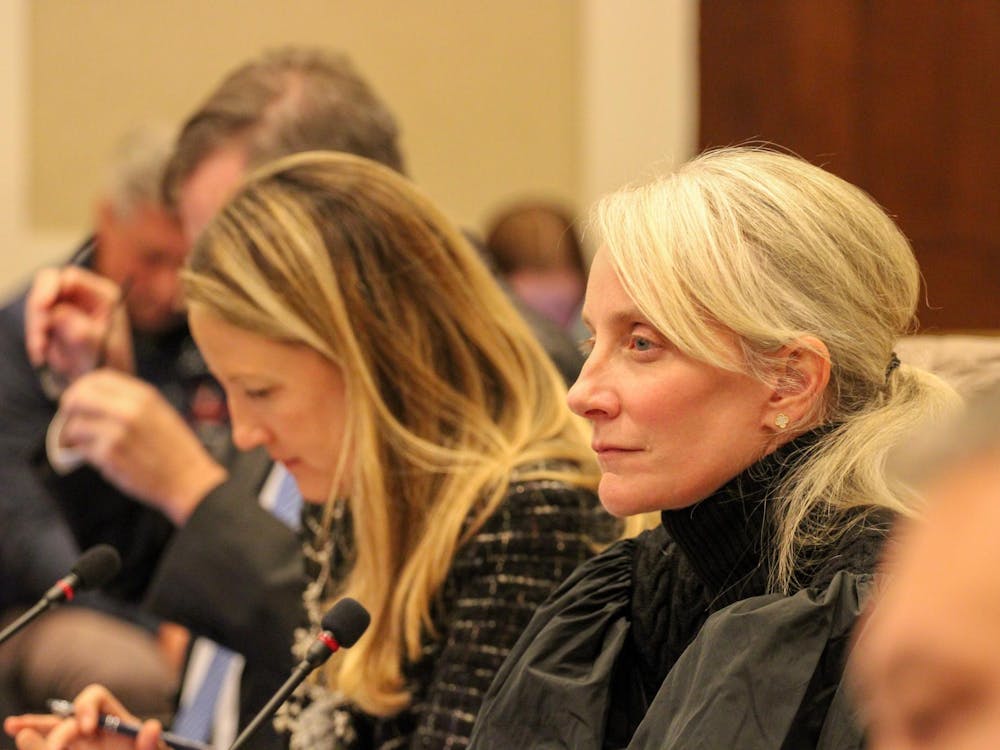The University begins work today on the restoration of the capitals of Pavilion II's columns, using specially designed lasers to clear away pollutants and grime. Because lasers will be in use, both the University and the conservation firm involved in the project are taking precautions to protect passersby from any harmful effects.\nJames Zehmer, project manager for the Pavilion II renovation, said the capital cleaning work is part of the larger Pavilion II renovation that began last October and should be completed before Sept. 25.\nPavilion II, which is located on the East Lawn, is one of three pavilions that have capitals carved out of marble instead of local sandstone, Zehmer said. Of these three pavilions with marble capitals, only Pavilion II's capitals have experienced deterioration deemed worthy of restoration by University officials.\n"What's happened is that over the years, atmospheric pollutants have sort of 'attacked' the marble, if you will," Zehmer said, "and they slowly have been degrading it and turning it into gypsum."\nThe buildup of pollutants has been happening for many years, he added, but it may have been at its peak when coal was burning at a much greater rate in Charlottesville than it is now. Zehmer said it is still difficult though to tell exactly what pollutants have caused the buildup.\nTo clear away the sediment, the University hired Milner + Carr, a Philadelphia-based company that specializes in architectural and statuary conservation.\n"Basically the method that they're using is a laser technology [called] the CL-20 backpack laser," Zehmer said. "They can set the laser so it basically vaporizes the deteriorated material and the buildup of these pollutants on the marble and [the laser] knows when to stop when it gets to ... the marble on the surface."\nThis innovative technology, however, does not remove all complications from the restoration process, said Leigh Hassler, a Milner + Carr representative.\n"In terms of challenges, I would say the major thing was developing [a laser] that would not introduce water on the site," Hassler said. "Pavilion II has just been recently restored, so we didn't want to have water running down the columns or saturating the ground or anything like that."\nHassler noted that the conservation firm foresees no other major complications during the restoration process.\n"It is very, very unlikely that anyone will get hurt or anything through this process," Zehmer said. "Basically, to be injured by it, you would have to turn the laser around and look right into it and shoot right into your eye."\nNevertheless, both the University and Milner + Carr are taking safety precautions.\nWhile the firm will work with the laser manufacturer to ensure that safety remains a priority, Hassler said, the University will create a 30-foot radius around the project site. As a result, two areas of the Rotunda terrace will be blocked off about 30 feet away from the capitals, Zehmer added. The East Lawn sidewalk will still be open to pedestrians, but a plywood wall will block people from walking too close to the project site. Additionally, a sheet will hang in front of the columns to prevent people from viewing the laser. Zehmer also said the University has sent out a safety notice to pavilion and Lawn residents to inform them of the restoration work and has provided a specially trained laser safety officer to oversee the ongoing renovations.






